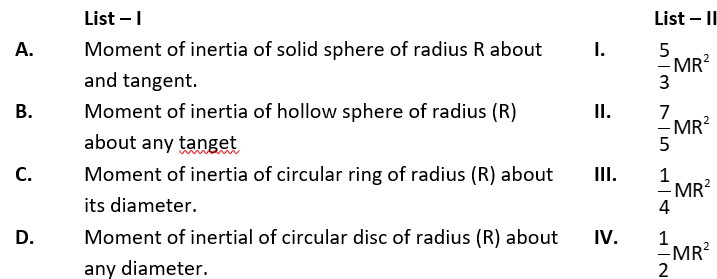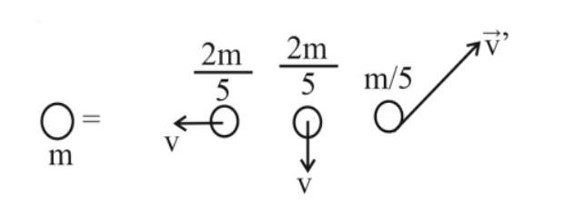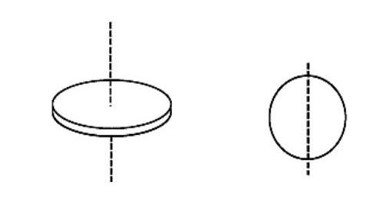7.11 Torques of equal magnitude are applied to a hollow cylinder and a solid sphere, both having the same mass and radius. The cylinder is free to rotate about its standard axis of symmetry, and the sphere is free to rotate about an axis passing through its centre. Which of the two will acquire a greater angular speed after a given time.
7.11 Torques of equal magnitude are applied to a hollow cylinder and a solid sphere, both having the same mass and radius. The cylinder is free to rotate about its standard axis of symmetry, and the sphere is free to rotate about an axis passing through its centre. Which of the two will acquire a greater angular speed after a given time.
-
1 Answer
-
Let m and r be the mass and radius of the hollow cylinder and solid sphere.
The moment of inertia of the hollow cylinder about its standard axis, =I
The MI of the solid sphere about an axis passing through its centre, Is = (2/5) mr2
We know the relation = I , where
= angular acceleration
= torque
I = moment of inertia
For the hollow cylinder, =
For the solid sphere, =
Since the torque applied is same, = , we get
= = (mr2) /( (2/5) mr2 )) = 5/2
Hence ……(i)
Now using the relation
+ where
= ini
...more
Taking an Exam? Selecting a College?
Get authentic answers from experts, students and alumni that you won't find anywhere else
Sign Up on ShikshaOn Shiksha, get access to
- 65k Colleges
- 1.2k Exams
- 679k Reviews
- 1800k Answers



